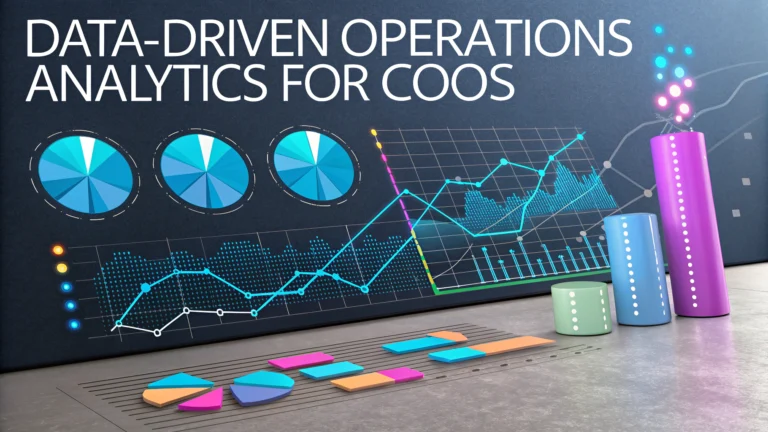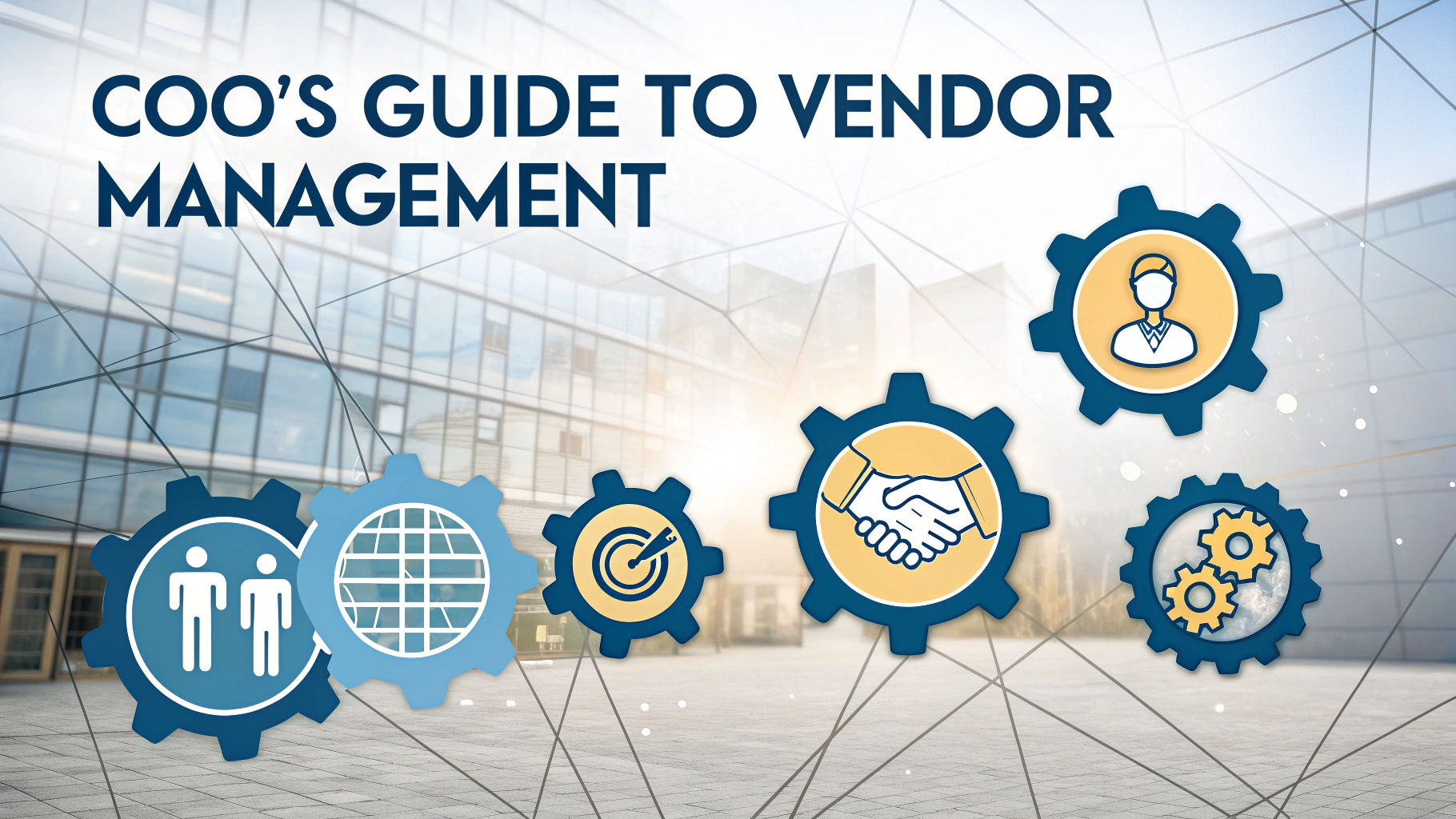Data analytics transforms how Chief Operating Officers (COOs) make decisions and optimize business processes across industries.
Advanced analytics tools and methodologies enable COOs to extract actionable insights from vast amounts of operational data, leading to improved efficiency and strategic planning.
This guide explores essential analytics approaches, tools, and implementation strategies specifically designed for operations leaders seeking to enhance their data-driven decision-making capabilities.
Key Analytics Areas for Operations
- Supply Chain Optimization
- Resource Allocation
- Process Efficiency
- Quality Control
- Workforce Management
- Cost Reduction
Essential Analytics Tools for COOs
| Tool Type | Examples | Primary Use |
|---|---|---|
| Business Intelligence | Tableau, Power BI | Data visualization and reporting |
| Predictive Analytics | SAS, RapidMiner | Future trend forecasting |
| Process Mining | Celonis, UiPath | Process optimization |
Implementing Data-Driven Operations
Step 1: Assess current data collection methods and identify gaps in operational metrics.
Step 2: Select appropriate analytics tools based on organizational needs and objectives.
Step 3: Train teams on data interpretation and analysis methodologies.
Step 4: Establish KPIs aligned with business goals.
Step 5: Create feedback loops for continuous improvement.
Real-Time Analytics Applications
- Production line monitoring
- Inventory management
- Equipment maintenance scheduling
- Quality assurance tracking
- Employee productivity analysis
ROI Measurement Framework
Track these metrics to measure analytics implementation success:
- Cost reduction percentage
- Process efficiency improvements
- Resource utilization rates
- Error reduction metrics
- Time saved in decision-making
Practical Tips for Success
Start with small, focused analytics projects to demonstrate value quickly.
Ensure data quality through regular audits and cleaning procedures.
Build cross-functional teams including IT, operations, and analytics experts.
Invest in user-friendly visualization tools for better stakeholder communication.
Moving Forward with Analytics
Connect with industry analytics experts through professional networks like LinkedIn Operations Analytics Group or the INFORMS community.
Schedule regular reviews of analytics strategies and adjust approaches based on measured outcomes.
Consider working with analytics consultants to accelerate implementation and maximize results.
Advanced Analytics Integration
Machine learning and AI capabilities can enhance traditional analytics approaches by:
- Automating routine data analysis tasks
- Identifying complex patterns in operational data
- Providing predictive maintenance insights
- Optimizing resource allocation in real-time
- Detecting anomalies in processes automatically
Data Security and Compliance
Implement robust security measures to protect operational data:
- Regular security audits
- Data encryption protocols
- Access control systems
- Compliance monitoring tools
- Data backup procedures
Change Management Strategies
Stakeholder Engagement
Ensure successful analytics adoption through:
- Regular communication with team members
- Clear documentation of new processes
- Milestone-based implementation plans
- Continuous feedback collection
Training and Development
Focus on building analytical capabilities across the organization:
- Data literacy programs
- Tool-specific training sessions
- Analytics workshops
- Peer learning initiatives
Empowering Operations Through Data
Success in modern operations management requires embracing data analytics as a core competency. COOs must lead this transformation by fostering a data-driven culture, investing in the right tools, and developing their teams’ analytical capabilities.
The journey to data-driven operations is continuous, requiring regular assessment and adaptation of analytics strategies. Organizations that successfully integrate analytics into their operations will gain significant competitive advantages through improved efficiency, reduced costs, and better decision-making capabilities.
Stay committed to the analytics journey by continuously exploring new tools, methodologies, and best practices while maintaining focus on measurable business outcomes and sustainable growth.
FAQs
- What is data-driven operations and why is it important for COOs?
Data-driven operations is the practice of using data analytics, metrics, and insights to make strategic operational decisions. It enables COOs to optimize processes, reduce costs, improve efficiency, and make evidence-based decisions rather than relying on intuition. - Which key performance indicators (KPIs) should COOs focus on?
Essential KPIs include operational efficiency metrics, cycle time, capacity utilization, employee productivity, customer satisfaction scores, inventory turnover, quality metrics, cost per unit, and return on investment (ROI). - What analytics tools are commonly used for operational decision-making?
Popular tools include ERP systems, business intelligence platforms like Tableau and Power BI, predictive analytics software, supply chain analytics tools, and integrated performance management systems. - How can predictive analytics benefit operational management?
Predictive analytics helps forecast demand, anticipate equipment maintenance needs, optimize inventory levels, predict bottlenecks, and identify potential operational risks before they occur. - What role does real-time data analytics play in operations management?
Real-time analytics enables immediate response to operational issues, helps monitor production processes, manages resource allocation, tracks performance metrics, and facilitates quick decision-making in dynamic environments. - How can COOs effectively implement data governance in operations?
Implementation involves establishing data quality standards, creating data collection protocols, ensuring data security, defining roles and responsibilities, and maintaining compliance with regulations while enabling accessibility. - What are the common challenges in implementing data-driven operations?
Common challenges include data quality issues, integration of legacy systems, resistance to change, lack of analytical skills among staff, data silos, and the need for significant infrastructure investment. - How does machine learning impact operational efficiency?
Machine learning algorithms can optimize scheduling, improve quality control, automate routine tasks, enhance demand forecasting, and identify patterns in operational data to improve decision-making and efficiency. - What are the best practices for building a data-driven operational culture?
Best practices include providing data literacy training, establishing clear metrics, encouraging data-driven decision-making at all levels, investing in appropriate technology, and creating feedback loops for continuous improvement. - How can COOs measure the ROI of data analytics initiatives?
ROI can be measured through cost savings, efficiency gains, reduced downtime, improved quality metrics, increased customer satisfaction, faster time-to-market, and enhanced resource utilization rates.







